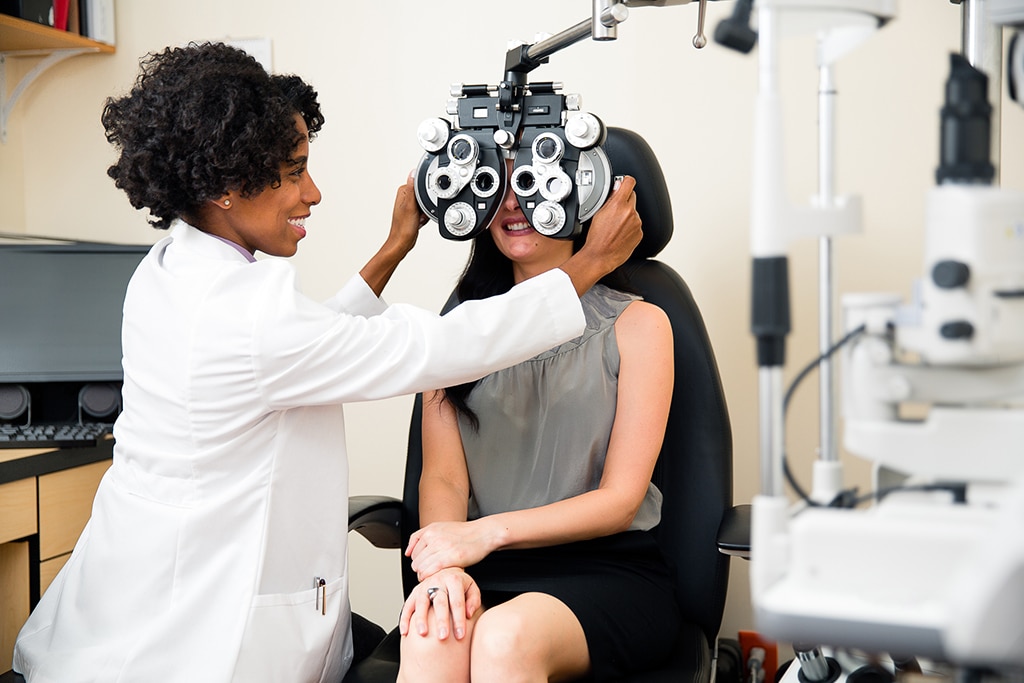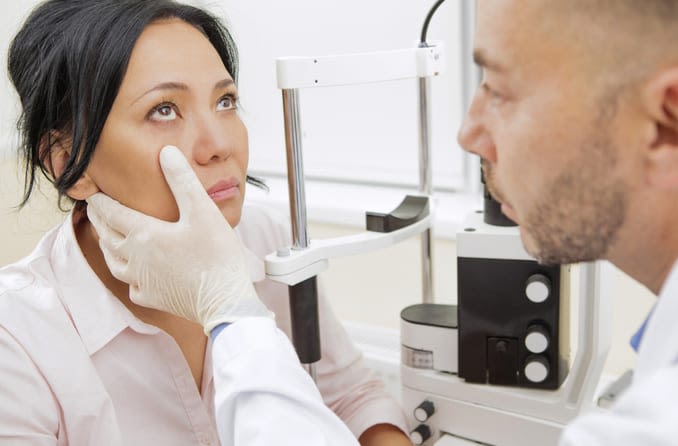Why Choosing an Eye Doctor Optometrist is Essential for Your Eyes
Why Choosing an Eye Doctor Optometrist is Essential for Your Eyes
Blog Article
Discovering the Most Recent Technical Innovations in Optometry and What They Mean for Optometrists
From the accuracy of Optical Comprehensibility Tomography to the nuanced insights provided by AI-driven analysis devices, these developments are setting new requirements in person assessment and treatment. As these improvements penetrate the technique, eye doctors are faced with the difficulty of accepting these devices to boost person outcomes.
Developments in Diagnostic Equipment
Advancing the field of optometry, innovations in analysis devices have transformed the way eye treatment experts evaluate and diagnose aesthetic disabilities and ocular conditions. The past decade has witnessed substantial technical improvements, enabling even more extensive and accurate analyses.
One more secret technology is the intro of advanced corneal topography systems, which map the surface area curvature of the cornea with accuracy. These tools are especially useful for suitable contact lenses and identifying corneal problems. Additionally, electronic retinal imaging has actually transformed standard ophthalmoscopy, supplying comprehensive, scenic sights of the retina that promote extensive aesthetic exams.
The development of wavefront aberrometry has also been important, allowing the evaluation of refractive mistakes with unmatched accuracy (Eye Doctor). This innovation helps in personalizing restorative lenses and improving surgical results for refractive surgical treatments. Jointly, these diagnostic improvements empower optometrists to deliver premium person care, making certain very early intervention and tailored treatment strategies, ultimately improving aesthetic wellness results
AI in Individual Administration
Building on the structure of sophisticated analysis tools, the incorporation of expert system (AI) in person monitoring represents a transformative jump for optometry. AI systems are significantly used to improve efficiency, precision, and personalization in patient treatment. By examining large amounts of information, AI can determine patterns and anticipate possible ocular conditions, making it possible for optometrists to customize interventions more effectively. This capacity is vital in handling persistent eye illness such as glaucoma and diabetic retinopathy, where early detection and constant monitoring are crucial.
Additionally, AI-driven systems help with structured patient interactions and management procedures. Automated scheduling, online appointments, and customized follow-up strategies not just improve individual complete satisfaction yet also enhance time monitoring for specialists. These systems can triage patients based on the seriousness of their problems, making certain that those in crucial demand obtain prompt interest.
Moreover, AI boosts decision-making by providing optometrists with evidence-based referrals and treatment pathways. By integrating data from digital wellness records, AI tools provide insights that notify scientific choices, lowering the risk of errors and improving client results. As AI remains to progress, its function in individual monitoring will likely increase, improving the landscape of optometric treatment.
Developments in Retinal Imaging
In the world of optometry, retinal imaging has witnessed impressive technical developments that are enhancing analysis capacities and client care. Technologies such as Optical Coherence Tomography (OCT) and fundus photography have actually reinvented how eye doctors imagine and assess the retina.
Enhanced imaging techniques like OCT angiography are further refining analysis accuracy. This non-invasive method maps blood circulation in the retina, using vital insights into vascular health without the demand for dye shots. Furthermore, adaptive optics technology is being integrated into retinal imaging systems to remedy ocular aberrations, providing unprecedented picture clarity. Such improvements promote the identification of min retinal modifications that can represent disease development.
In addition, developments in artificial knowledge are boosting retinal imaging by enabling automatic evaluation of huge datasets. These systems aid eye doctors in determining patterns a sign of pathology, consequently boosting analysis precision and efficiency. Collectively, these developments are transforming retinal imaging into a foundation of contemporary eye treatment, enhancing end results and increasing healing opportunities.
Teleoptometry's Expanding Duty
Teleoptometry is significantly coming to be an important part of eye care, driven by developments in electronic interaction and diagnostic devices. This is especially beneficial in underserved and rural areas where accessibility to specialized eye care is usually minimal.
The combination of expert system (AI) further boosts teleoptometry, allowing the evaluation of visual data and helping in the detection of eye conditions such as glaucoma and diabetic person retinopathy. AI-powered algorithms can swiftly translate intricate imaging data, providing eye doctors with important understandings that reinforce clinical decision-making.
In addition, teleoptometry supports connection of care via seamless combination with electronic health and wellness records (EHRs), permitting optometrists to maintain thorough individual histories. This makes certain that people my site get customized and regular care even when talking to different specialists.
In spite of these benefits, obstacles remain, including guaranteeing information protection and managing client expectations. Teleoptometry represents a considerable stride in the direction of even more easily accessible, reliable, and patient-centered eye treatment. As modern technology advances, official statement its duty is positioned to expand further.

Future Fads in Eye Treatment
A myriad of cutting-edge fads is readied to reshape the future of eye care, driven by technological advancements and the evolving demands of people. One substantial fad is the assimilation of expert system (AI) in diagnostics, which guarantees to improve the precision and performance of eye exams. AI algorithms can assess substantial amounts of data from retinal pictures, potentially discovering problems like diabetic retinopathy and glaucoma earlier than traditional approaches.
In addition, individualized medicine is gaining grip in optometry, with genetic testing educating customized treatment plans. This strategy aims to optimize individual outcomes by customizing treatments to specific genetic accounts. Wearable innovation, such as clever call lenses, is likewise imminent, using real-time monitoring of intraocular stress or glucose degrees, hence supplying continuous insights right into systemic and eye health and wellness.
The fostering of augmented fact (AR) and virtual truth (VIRTUAL REALITY) in training and client education and learning is another arising trend. These innovations offer immersive experiences that can improve understanding and abilities both for patients and optometrists. As these fads progress, optometrists should stay abreast of technical improvements to provide innovative treatment, guaranteeing enhanced person outcomes and satisfaction in the vibrant landscape of eye treatment.
Conclusion

Collectively, these analysis developments empower eye doctors to supply superior person care, ensuring very early intervention and tailored therapy techniques, eventually improving visual wellness outcomes.

As these modern technologies proceed to progress, optometrists have to adjust and integrate them right into method, eventually optimizing operations effectiveness and boosting the standard of eye treatment provided to clients.
Report this page